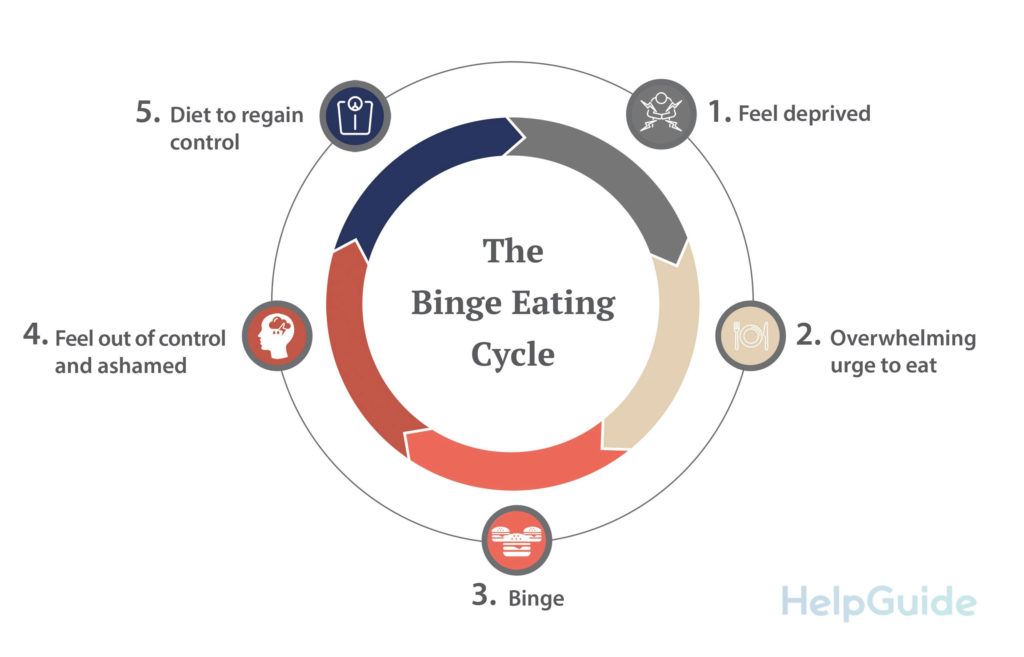6 THINGS YOU NEED TO KNOW
MARY ANNE COHEN LCSW, BCD
LINDA, A 16 YEAR-OLD TEEN, WAITS UNTIL HER FAMILY IS ASLEEP AND THEN SNEAKS DOWNSTAIRS AND STANDS IN FRONT OF THE OPEN REFRIGERATOR GORGING ON LEFTOVER CHOCOLATE CAKE. DAVE, A 45 YEAR-OLD MARRIED MAN, STOCKS UP ON FAST FOOD AND CANDY WHICH HE CONSUMES ON HIS DRIVE HOME FROM WORK, THROWING OUT THE FOOD WRAPPERS BEFORE HE GETS TO BROOKLYN.
Paula, a 38 year-old mother of three, goes to her exercise class and then comes home tearing into her kitchen cupboard while standing over her sink overeating. Sometimes Paula makes herself throw up. What each of these people have in common is binge eating disorder (BED), the most common eating disorder.
Although the media often plays up celebrities with more “exotic” anorexia and bulimia, overeating is a much more frequent eating struggle effecting three times the number of people with anorexia and bulimia. According to the Binge Eating Disorder Association, an estimated 3.5% of women, 2% of men, and 30% to 40% of those seeking weight loss treatments can be diagnosed with binge eating disorder. The disorder can impact all people regardless of education or income—including adults, children, and adolescents.
HERE’S WHAT YOU NEED TO KNOW
- Binge eating disorder (also called compulsive eating) refers to recurring episodes of overeating that are not related to hunger and cause people to feel guilty and ashamed afterwards.
- Although people with BED may be overweight, not all are. Some binge eaters may be normal weight and some overweight people do not binge.
- Binge eating is not a choice and cannot be controlled by willpower. It is a psychological response to stress and a biological response to hormones and heredity and other chemical levels in the body.
- BED often occurs in people with depression, anxiety, and obsessive compulsive disorders. Some binge eaters may also have alcohol, drug, or shopping addictions.
- Restrictive dieting is considered the “gateway” behavior to developing a binge eating disorder. People who go on restrictive diets can be “good” for a while but often the diet backfires causing them to rush back and gorge on the foods they deprived themselves of.
- BED is also called emotional eating or stress eating. People are helped by identifying their triggers: boredom, anger, loneliness, feeling overwhelmed, resentment, and grief.

The truth is that bingeing is an attempt to make ourselves feel better. And of course there’s nothing wrong with the goal of self-soothing—it’s a healthy intention. But, ultimately, overeating when we are hungry from the heart but not from the stomach is hurtful to our bodies and our spirits.
If you are a binge eater and want to get “ownership” of your eating, reach out to MEND (Mindful Eating New Direction). MEND is a new community initiative to help people like you. You are not alone!
WE WILL WORK WITH YOU TO
• Custom tailor an individual approach for
your unique needs.
• Help you get control of your eating back.
• Develop and maintain healthy eating patterns.
• Regain body confidence.
• Unlock what may be keeping you
from healthy eating.
Schedule an initial assessment with MEND, and we’ll help you determine if you can benefit from treatment. To start a confidential conversation about your eating, please contact us. Contact is absolutely confidential.
Please feel free to call (718) 336-MEND. MEND is a division of The SAFE Foundation.
Mary Anne Cohen, LCSW, BCD has been Director of The New York Center for Eating Disorders since 1982. She is also author of French Toast for Breakfast: Declaring Peace with Emotional Eating and Lasagna for Lunch: Declaring Peace with Emotional Eating. She has hosted her own radio show on eating disorders, appears frequently on national television, and is the professional book reviewer for EDReferral.com, the largest international resource for eating disorders.